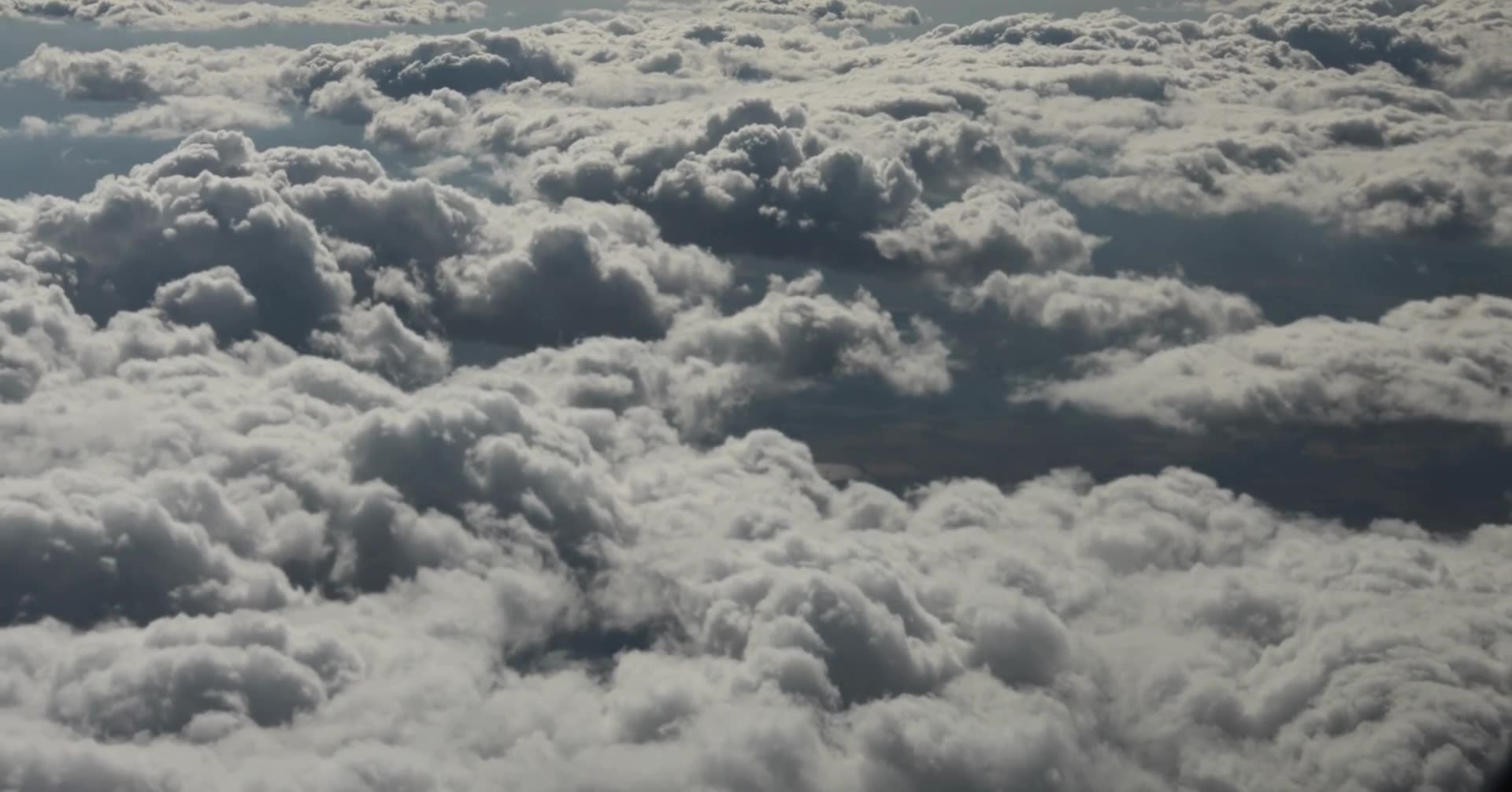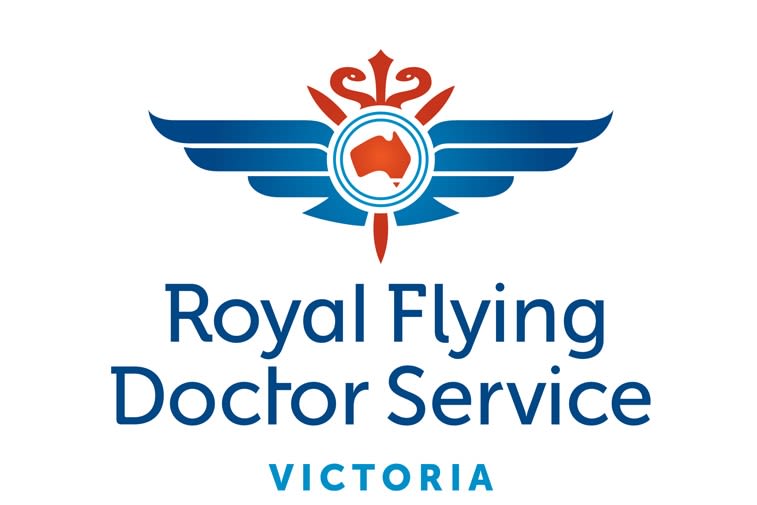Going Above and Beyond
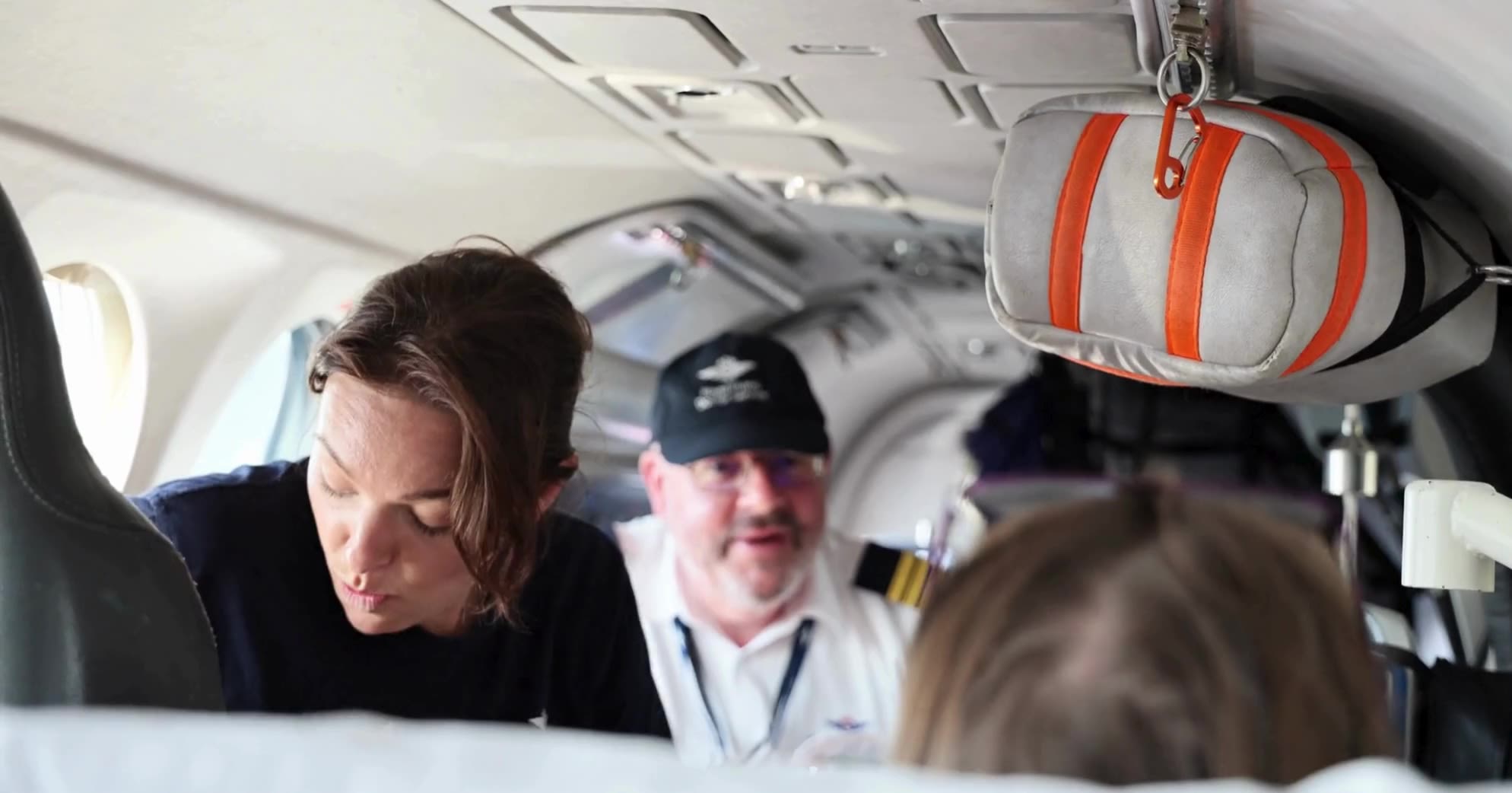
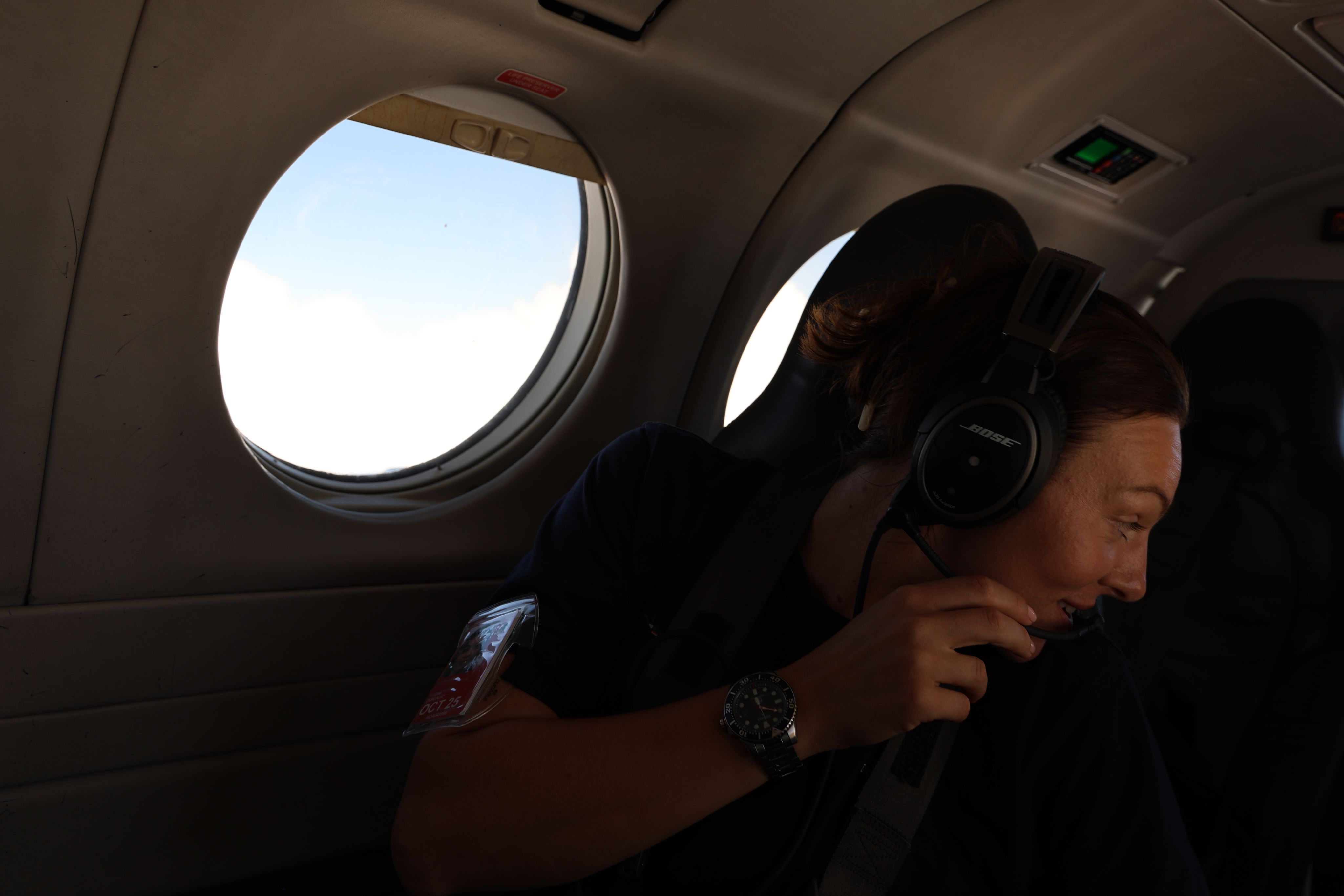
Securely seated in the back of the RFDS Beechcraft 350 aircraft, Flight Nurse Andie Duronjic is a comforting and extremely skilled presence for patients being transported in the air by the Royal Flying Doctor Service (RFDS) Victoria. She joins the latest cohort of flight nurses inducted into Hangar 85 as the service expands its capabilities to connect even more country Victorians to the care they need.
It’s a little past eight-thirty in the morning and Andie is positioned directly across from the first patient of the day; a woman being transported 400 kilometres from Swan Hill to Melbourne for urgent major abdominal surgery.
Without the option to be transported by the renowned, red-bellied aircraft the alternative would be a painful, risk-filled four-hour drive to the state’s capital for the Swan Hill local. That’s without factoring in traffic conditions, unsealed roads and the weather.
Instead, the travel time shrinks to just 50 minutes by air in a custom fit-out aeromedical plane, accompanied by a trained critical care nurse.
“Much better,” the patient confirms as she is transferred off the tarmac and into the aircraft by stretcher.
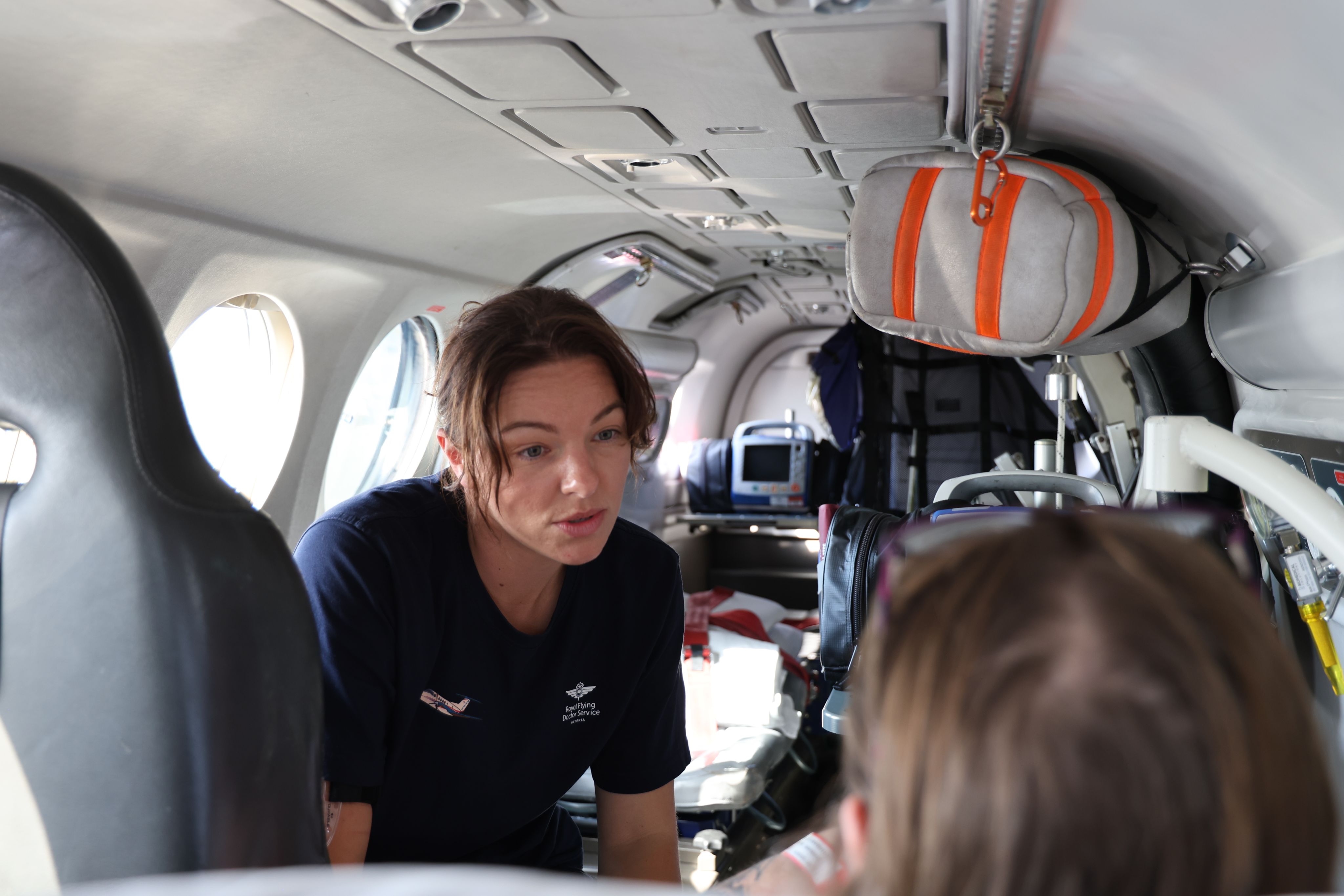
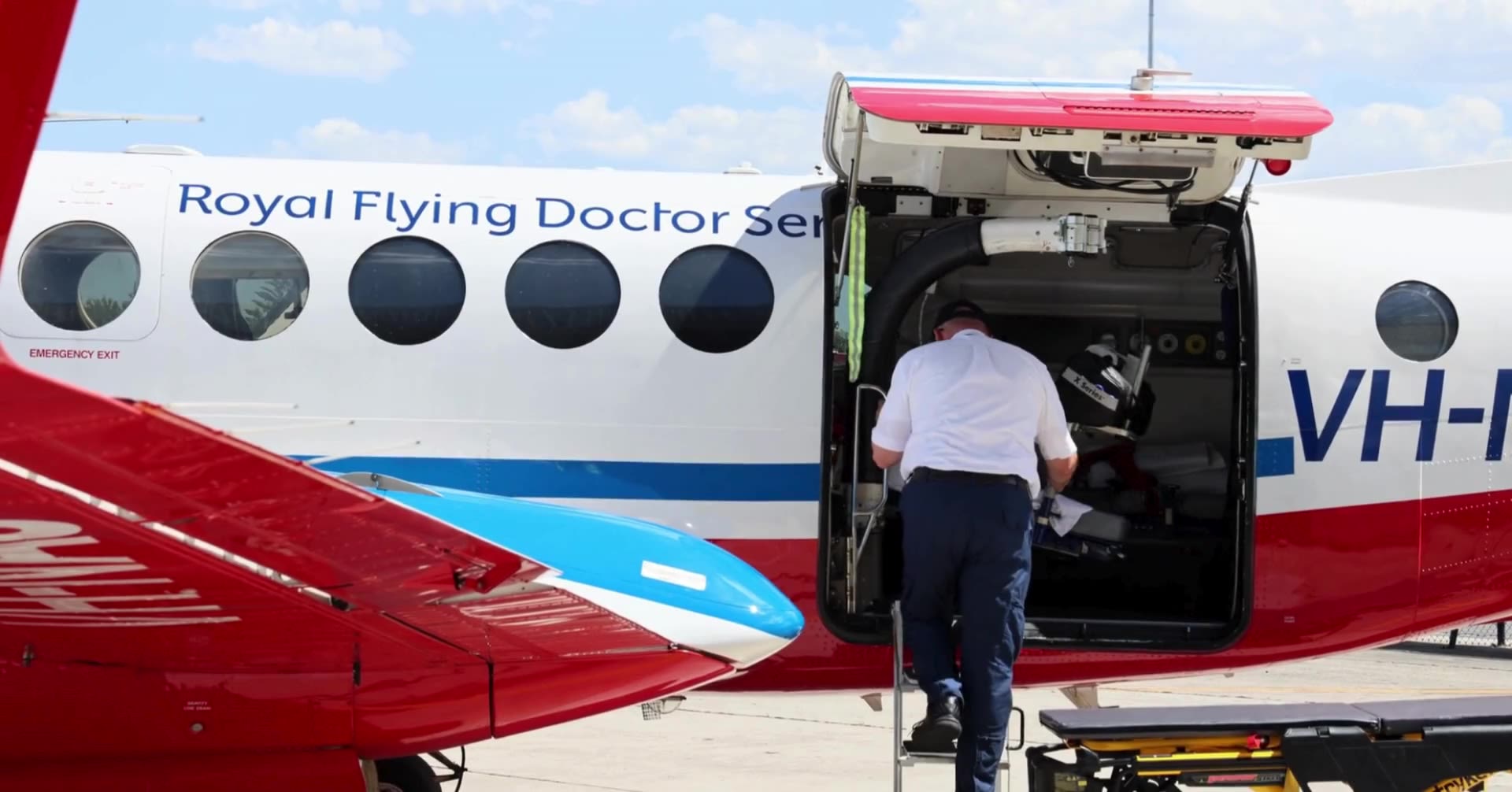
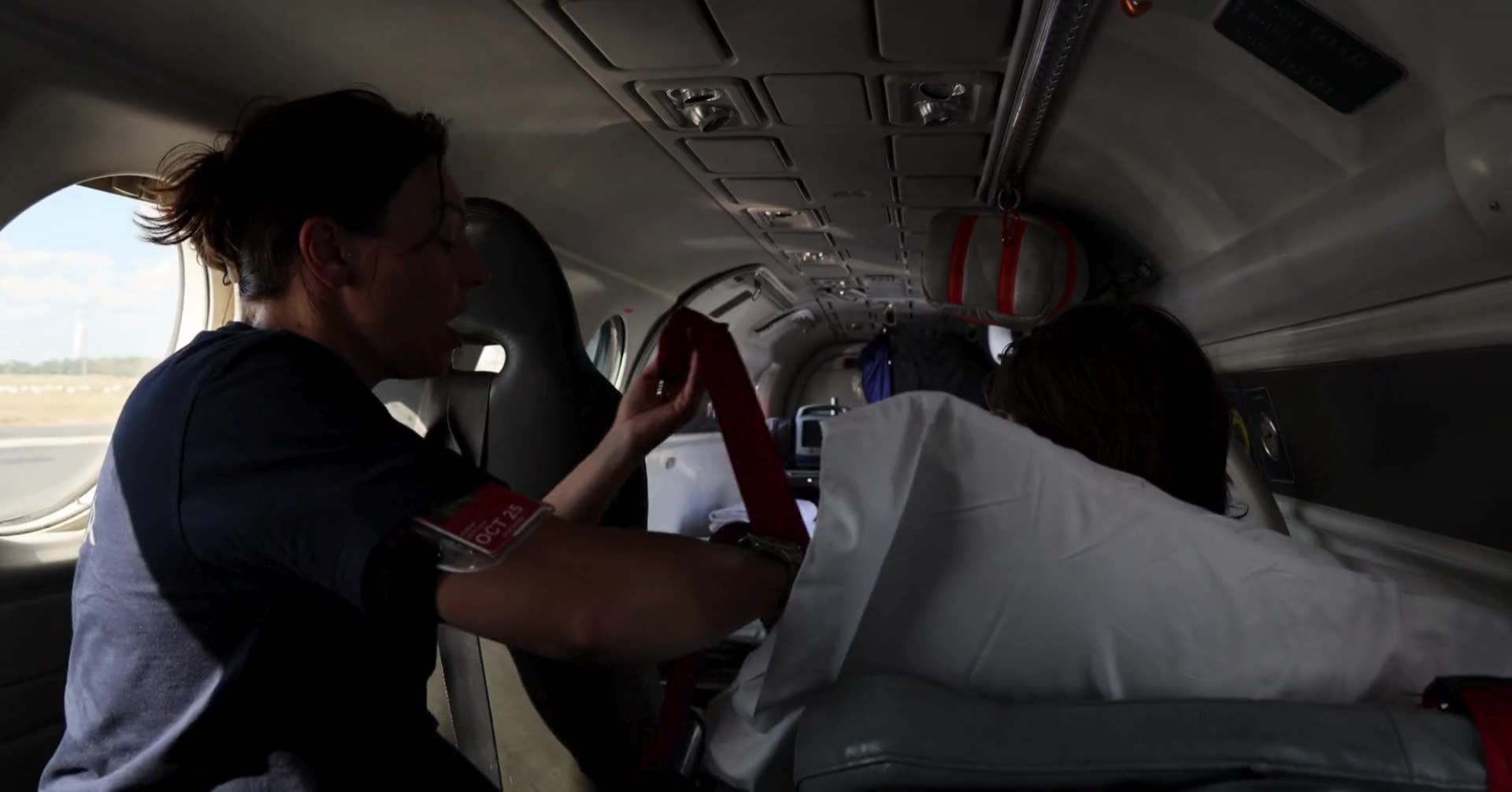
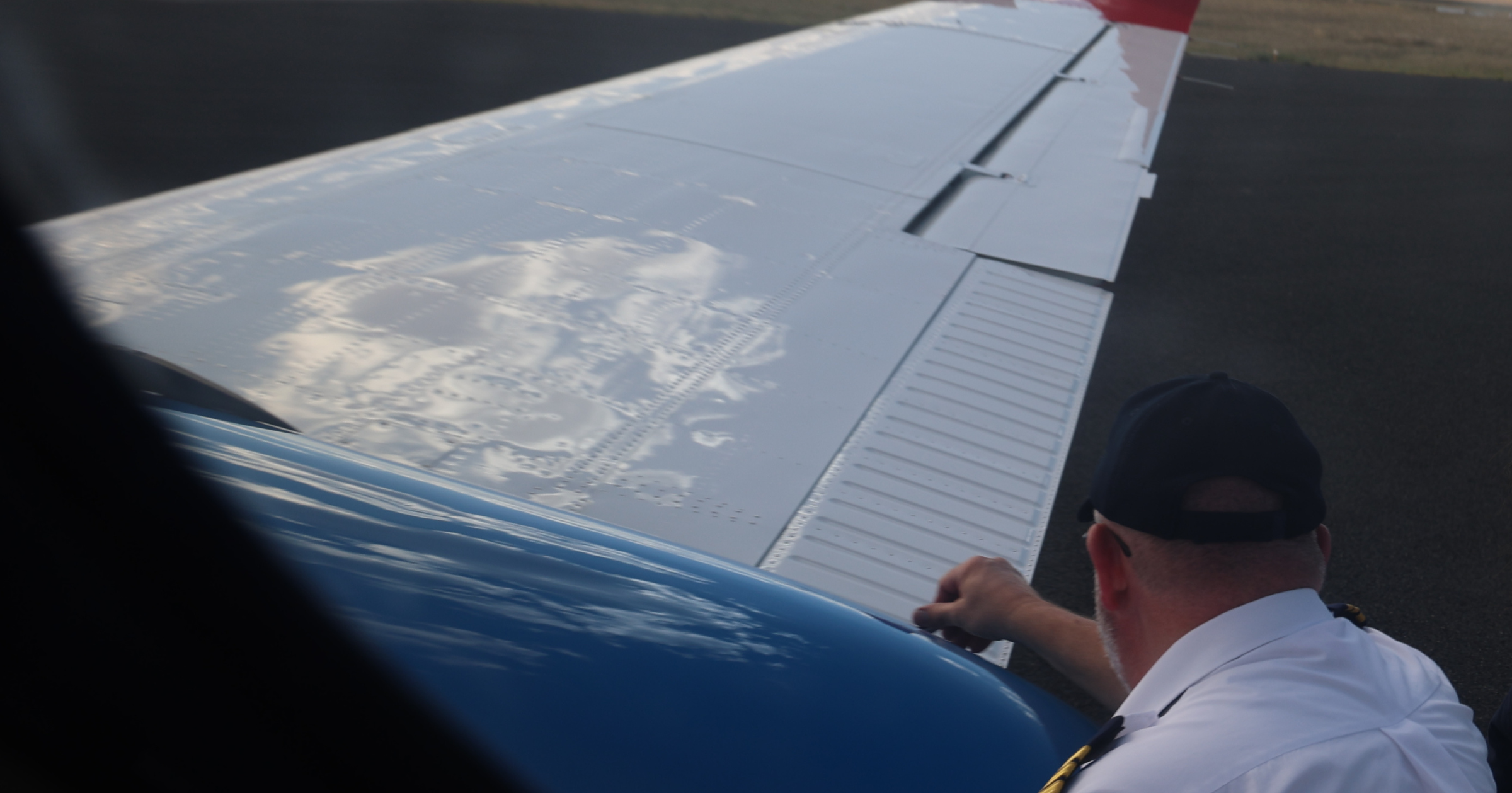
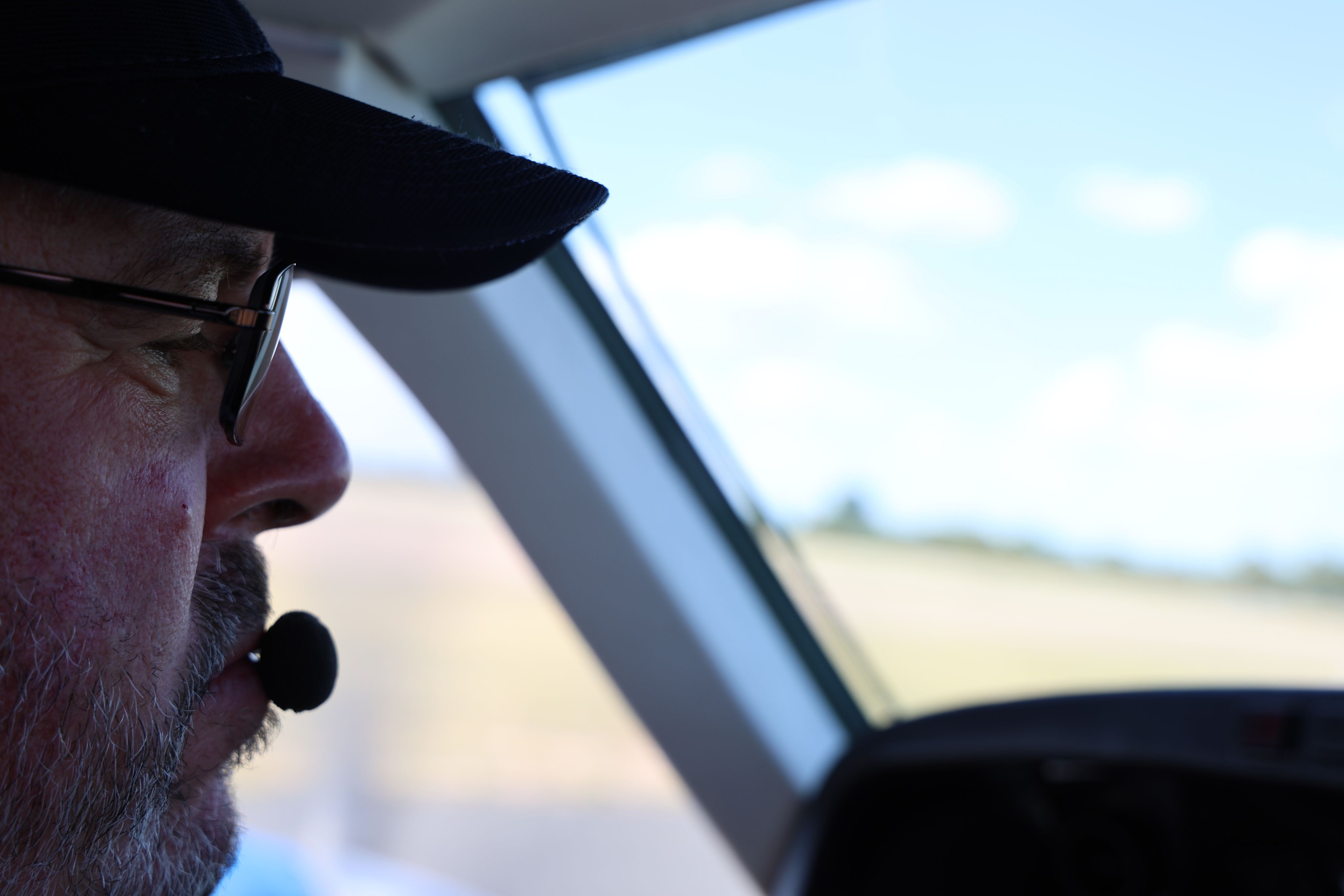
Inside, Andie takes the time to explain the routine safety procedures to the patient with a reassuring yet expert ease, before doing the necessary health checks which includes assessing the woman’s condition.
Meanwhile, out of the small window behind her shoulder, pilot Craig Nethery can be seen preparing for the return flight from Swan Hill aerodrome to the RFDS Base at Essendon Airfields.
While the AM shift may be a routine procedure for this well-versed aeromedical pair, it’s the patient’s first time in a plane. “Ever,” she remarks. Something not uncommon for patients being transported in the air by the Flying Doctor.
It’s a fact Andie is mindful of when settling patients in and takes the time to alleviate any nerves by explaining exactly what will happen. Multiple times a shift Andie is required to recite this exact information, yet each delivery is thoughtfully presented as if it were the very first time, with warmth and good humour.
As a Flight Nurse with the Flying Doctor, Andie’s work comes with added layers of complexity compared to working in a stationary hospital. It’s a dynamic, one-of-a-kind role that requires high levels of training and skill, from the constant monitoring of aviation conditions and any effect it may have on the patient to knowing the necessary flight safety procedures – all with the knowledge that support is just that bit further away when you are thousands of feet in the sky.
It takes a special kind of person to provide a high level of specialist care all the while ensuring the emotional needs of the patient is considered.
Yet Andie has a knack for noticing the small things. In this instance, it’s adjusting the woman’s position so she will be able to see out the window while in the air. Going beyond the scope of her role with a gesture that brings a very unwell woman a moment of novelty amongst the pain and nerves of going into serious surgery hundreds of kilometres away from home.
Andie notes, it’s the human connection fostered by the Flying Doctor that sets this unique job apart and is a key motivator for the team in their health care delivery.
Providing a ‘mantle of safety’ is more than a phrase left to the history books of the RFDS, to this critical care nurse; it’s a call to action.
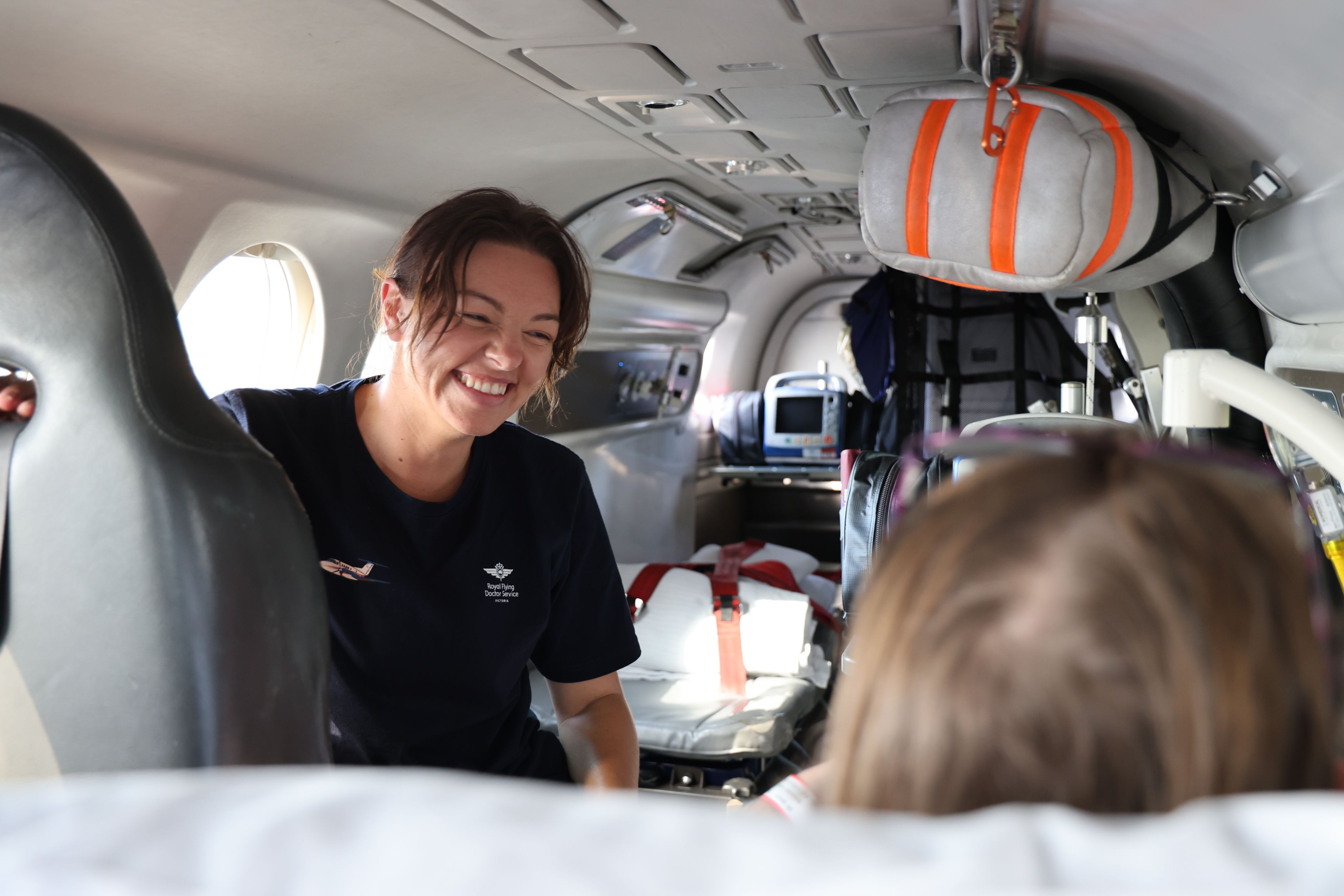
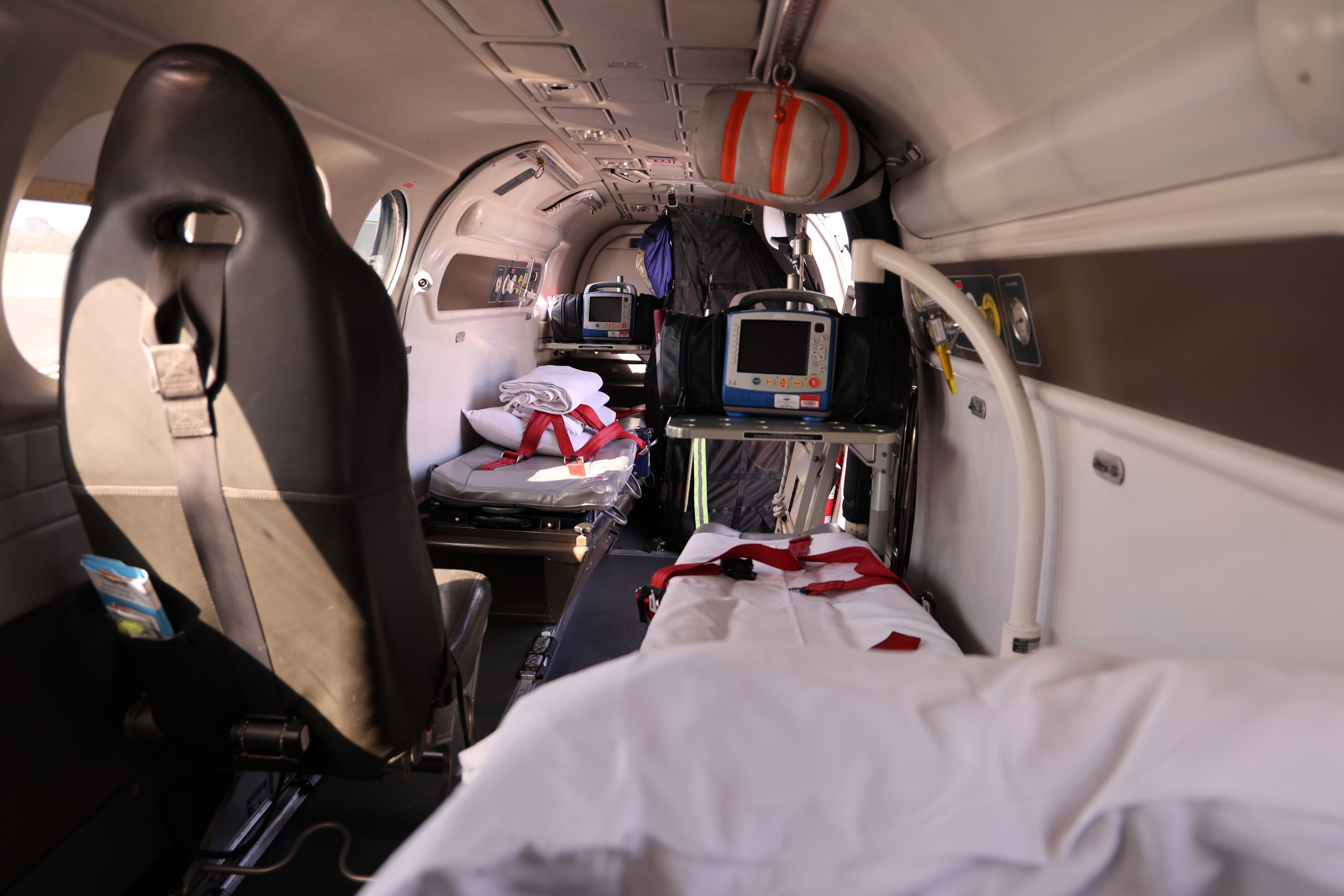

“It's just really beautiful. These are people
that I probably never would have met if I
was in the same hospital every day. And I
wouldn't have these beautiful connections
with them.”
- Andie
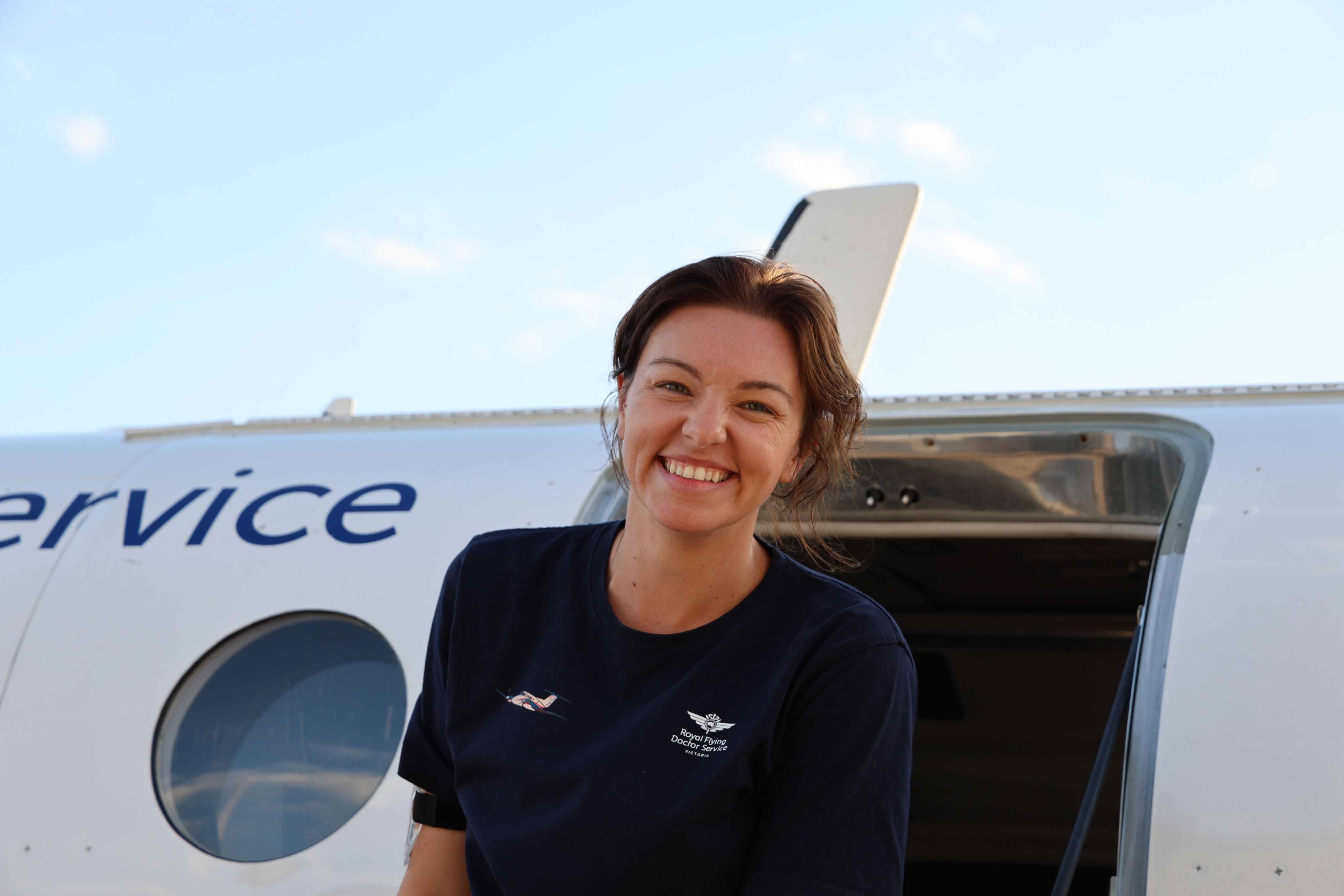
Andie belongs to the latest cohort of four additional flight nurses inducted into the Essendon Hanger, providing non-emergency aeromedical transport for Victorians and interstate patients.
In late 2023, The Royal Flying Doctor Service Victoria expanded its service to a two-shift roster, split into the AM and PM. Previously the service was operating only one eight-hour shift, daily.
To enable this, the number of flight crews has doubled. Hangar 85 is now complimented by a total of two pilots and eight flight nurses who, with the logistical expertise of flight operation crews, are now averaging an impressive one hundred patient transfers a month.
“It's just logistically a lot better,” Andie explains. “We’ve got two pilots on throughout the day and two nurses. We do have an hour to cross over and just help each other out with pre-flighting and checking suitability and safety of patients for the afternoon, and vice versa.”
The delivery of RFDS’ aeromedical transport in Victoria means Essendon based flight crews also have the flexibility to transport patients interstate, as the plane is not on standby for emergency retrievals.
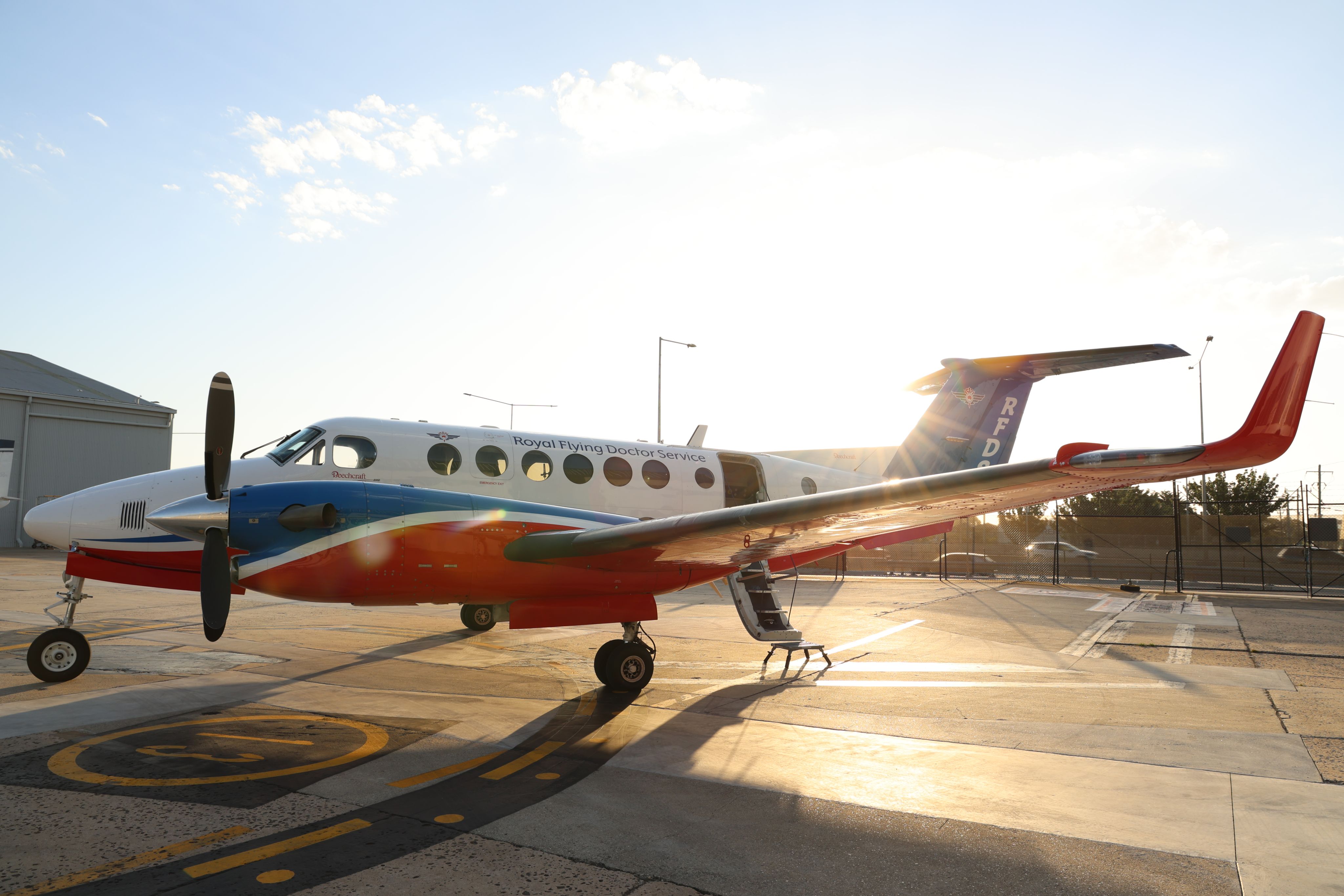
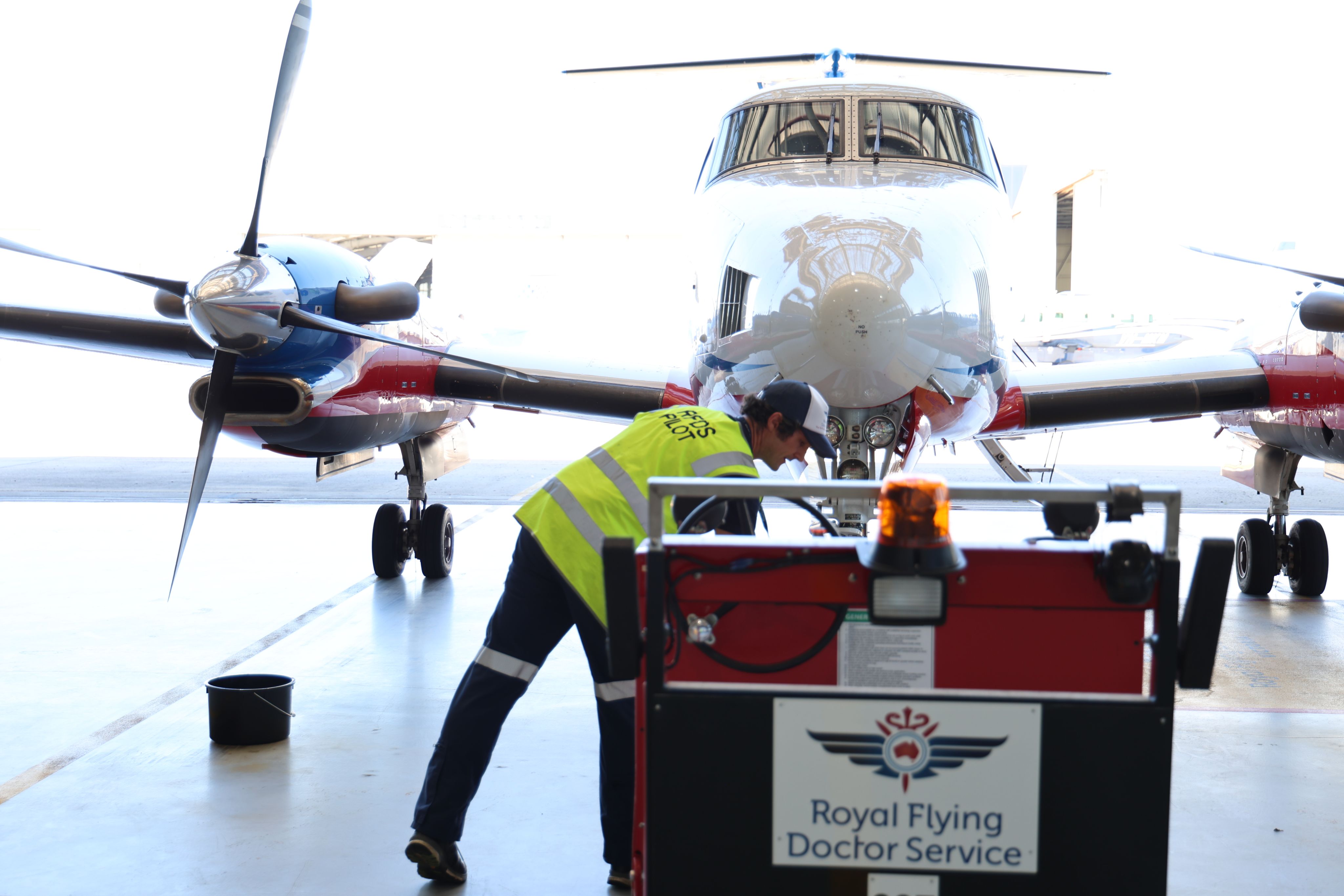
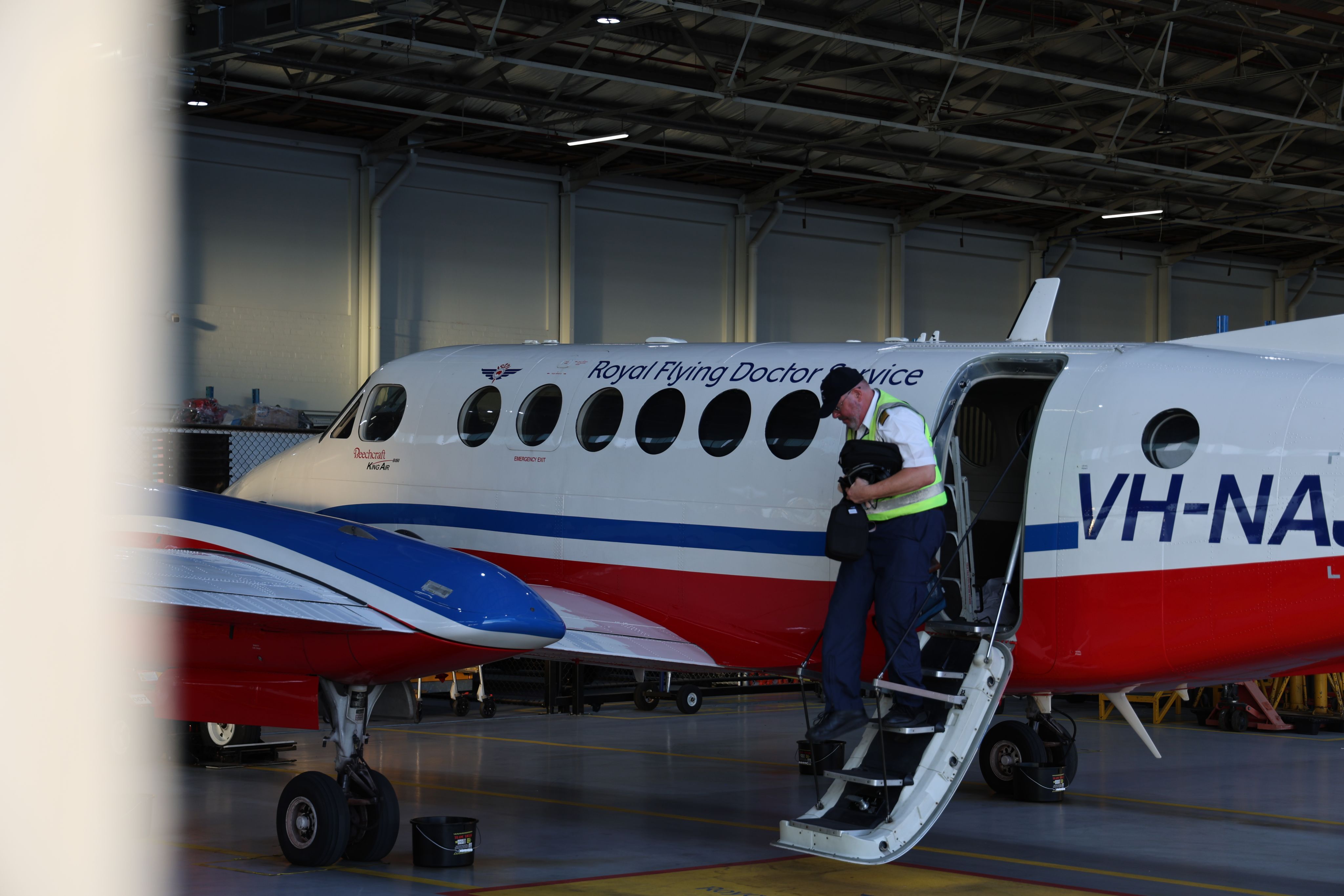
Andie says the move to two shifts now means crews have the capacity to conduct an interstate transfer, fly back, and still have time left in the day for state-based transfers.
“It means that if we now have to go into Sydney or to Adelaide, that doesn't mean that we're done for the day,” Andie outlines.
“It means we’re getting more people to where they need to go…. It’s really good.”
It’s important to understand that while non-emergency patients may not be in a critical condition, many are extremely unwell. Travelling by road is not a safe option for many living hours from a tertiary hospital.
“I think that people do forget we do actually take some fairly sick patients,” Andie reveals.
“If something went wrong on the road and you've got nothing in between – that’s a big issue.
“For example, if you're taking someone from Warrnambool to Melbourne that's a three to four-hour trip on the road where you don’t actually have the major hospitals that if something went wrong… you can't fix that on the road.
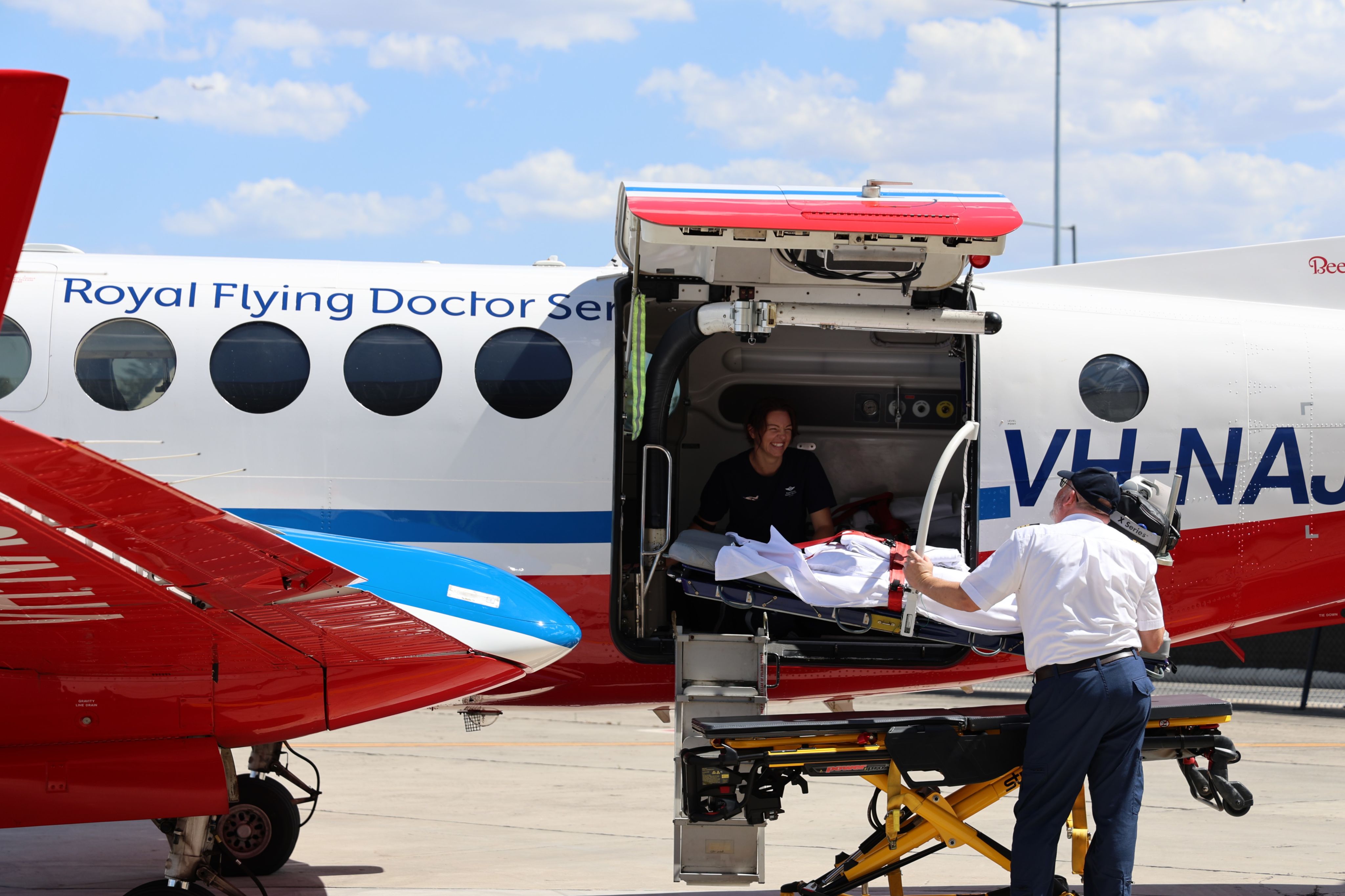
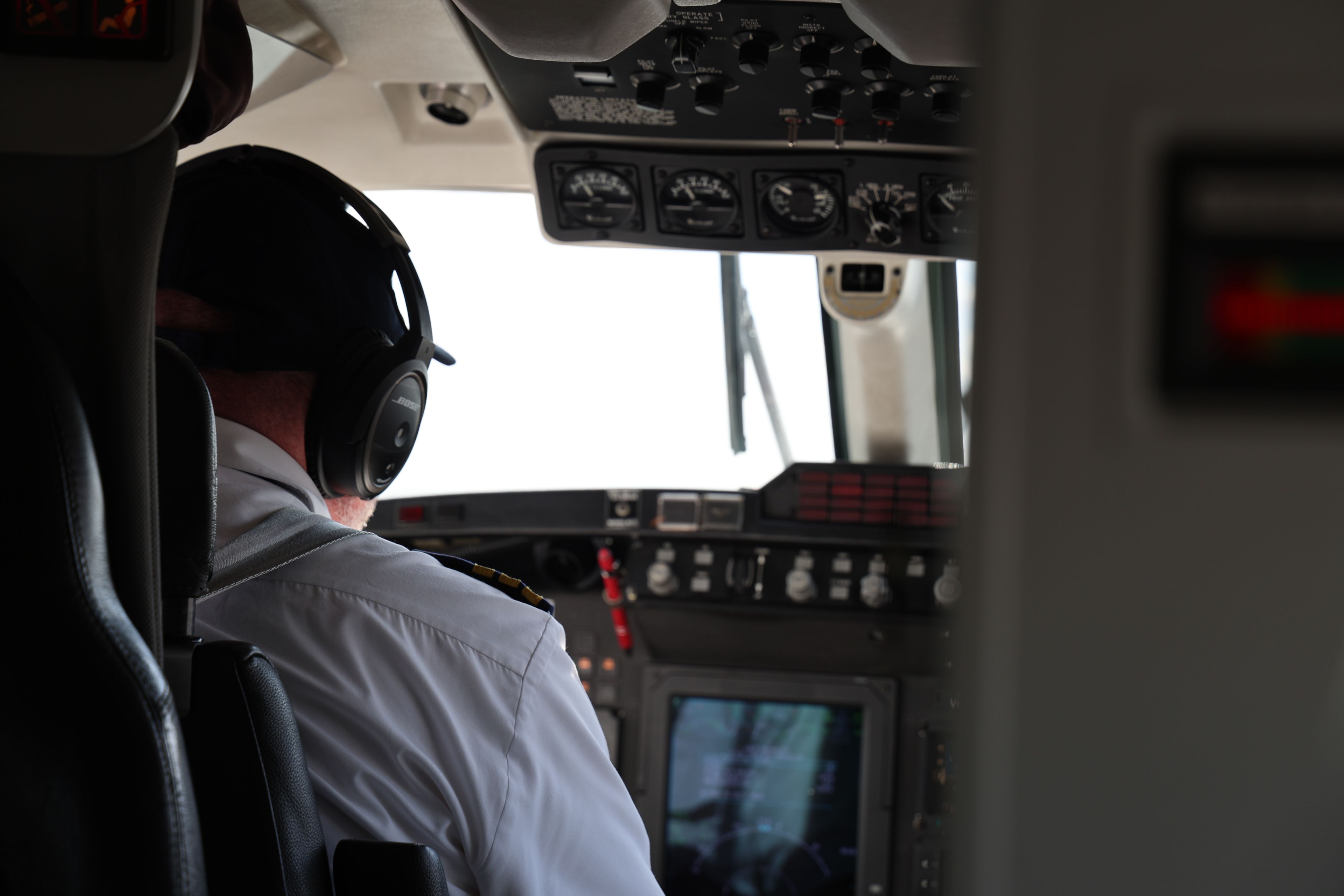
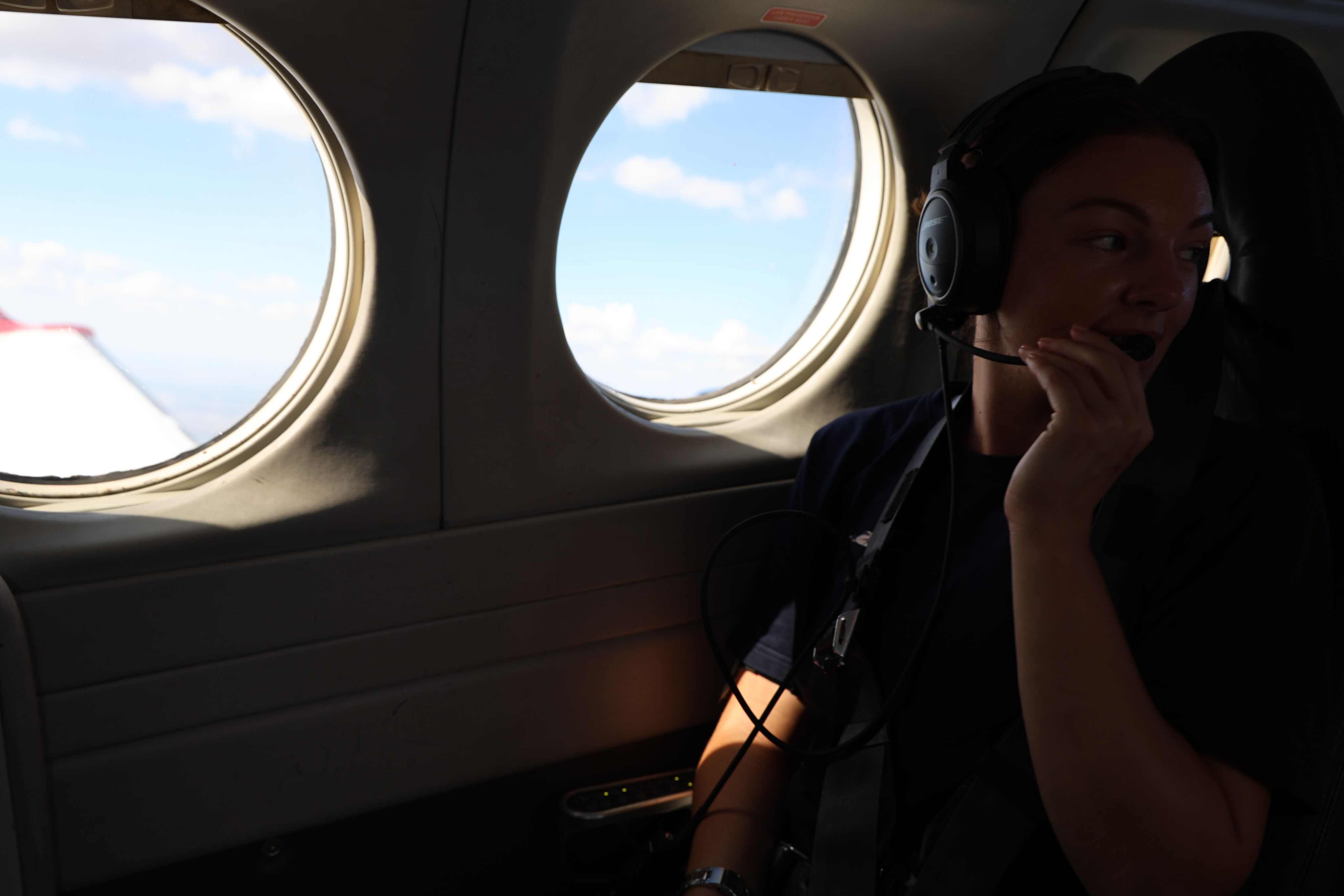
“So, you really do need that level of care and the
resources that we've got on the plane to get them there
quickly. We can't risk four to six hours on the road.”
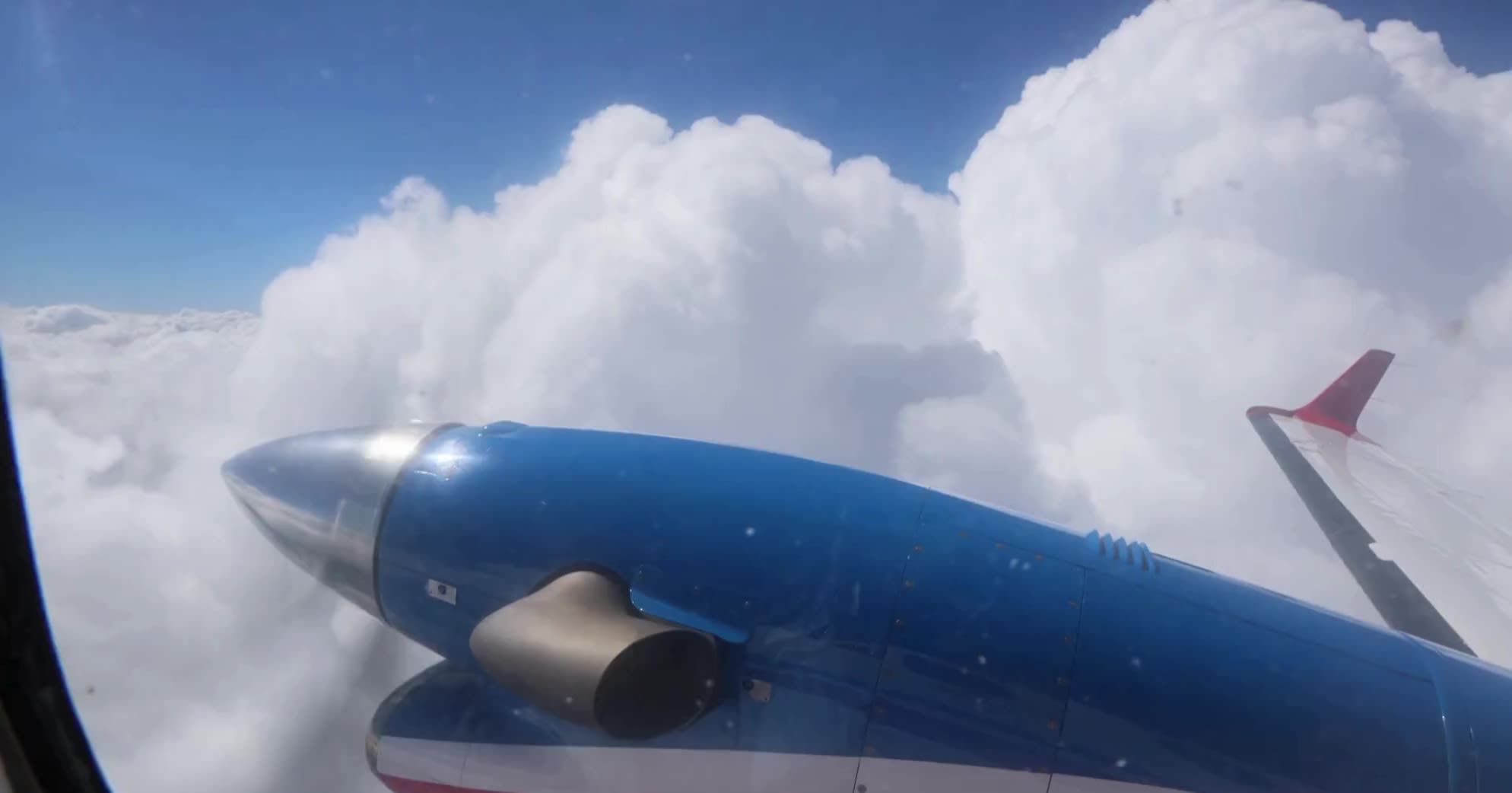
“It is probably one of the most exciting and incredible jobs that I can do in Australia, where I put medicine and helping people - one of my favorite things - with planes and getting to travel,” Andie says of the unique opportunities that come with working in a flying hospital.
“I get to see new places, new faces, and I put things together in a very different way. It's very unique.”
The enduring highlight though, Andie says, is seeing a familiar face pull back into to the base, ready for the return flight back to their community.
“When you can bring patients home after flying them over in the first place is really rewarding.
“We're just trying to get you to have the same access as anyone who is in a metropolitan hospital, to get the right care and then to just get you home, get you feeling better and where you want to be… with your own family,” she summarises.
Like many Flying Doctor frontline staff, not only does Andie have a professional connection to the service but she also has first-hand experience of the impact of the Flying Doctor on families.
“My brother lives in Mildura. He has a four-year-old son and when he was first born, he needed some specialist services,” Andie explains.
As it turns out, her nephew was flown by the very flight crew she now works alongside to The Royal Children’s Hospital in Melbourne and back home again.
In a reaffirming twist of fate, one of Andie’s very first patient transfers was a three-day-old baby accompanied by their mother… from Mildura to the Royal Children’s. She was also the flight nurse on roster for their return flight.
“It was just really nice to be a part of it for someone else, especially when you look at outcomes like that,” she says.
“I’m very proud of the work of our team”.
“The more that I've worked for the Flying Doctor, the more I just think of equality. That's the word that really comes to mind for me.”
“Making sure that no matter where you are, you're going to get equal access to the help that you need.”
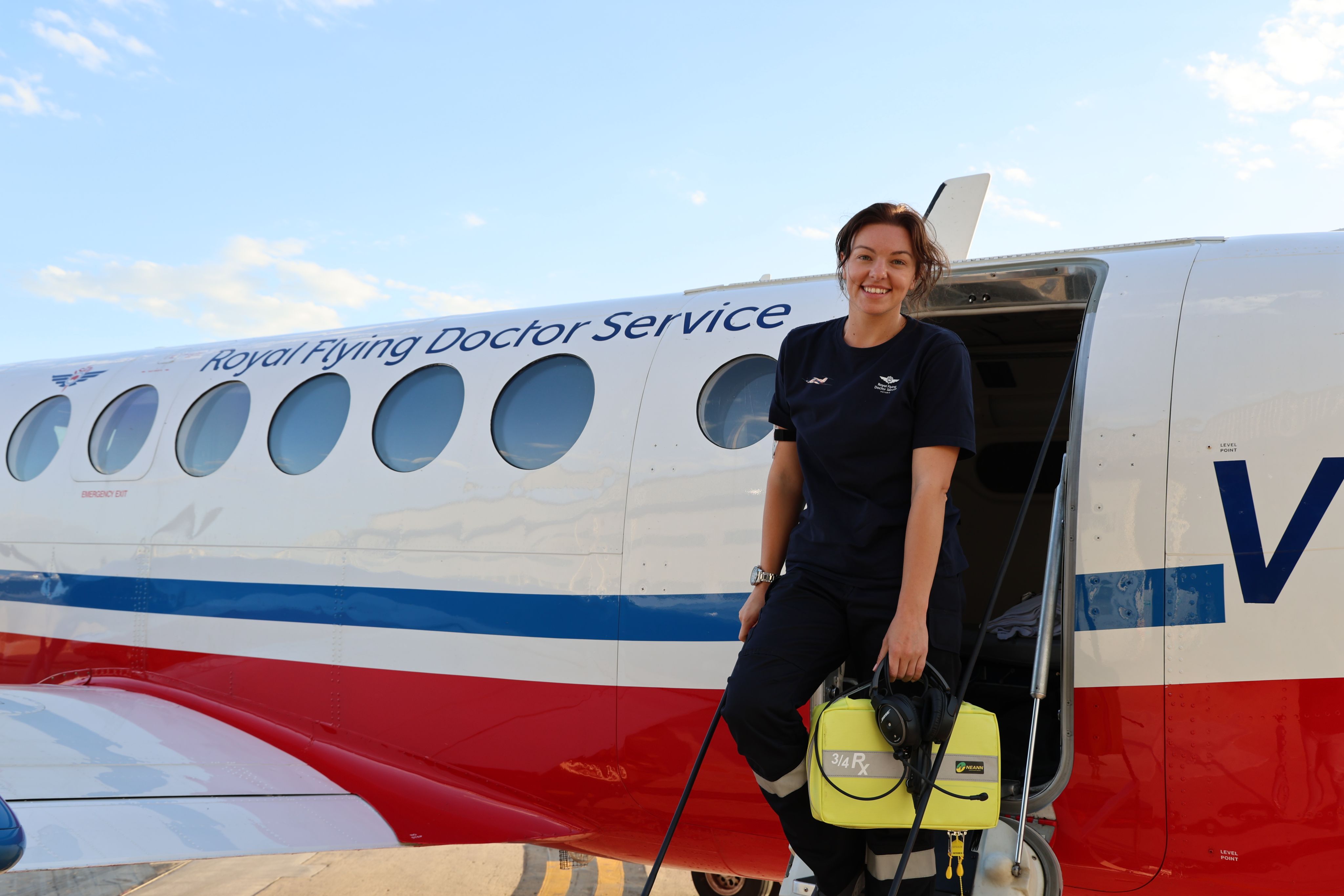
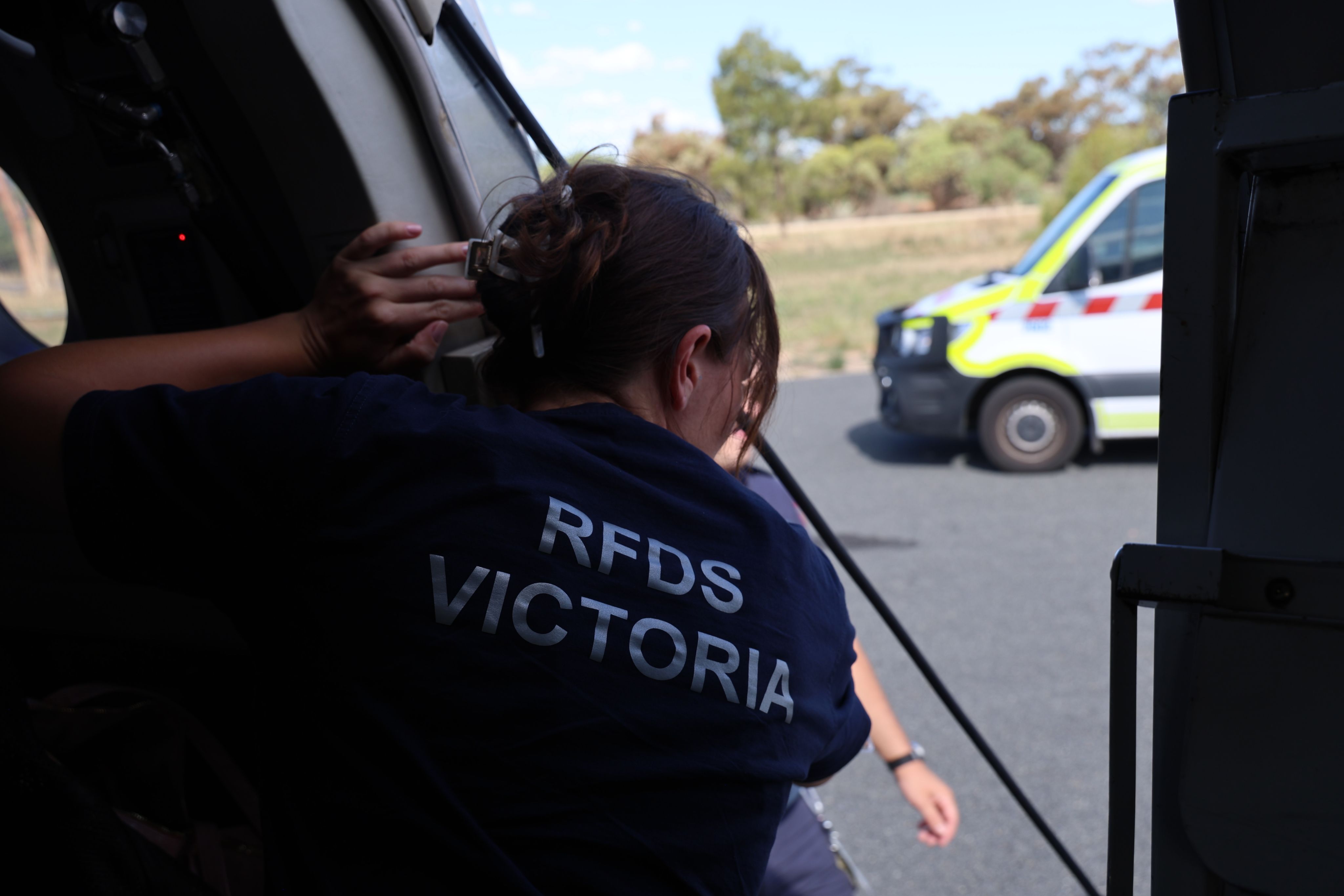
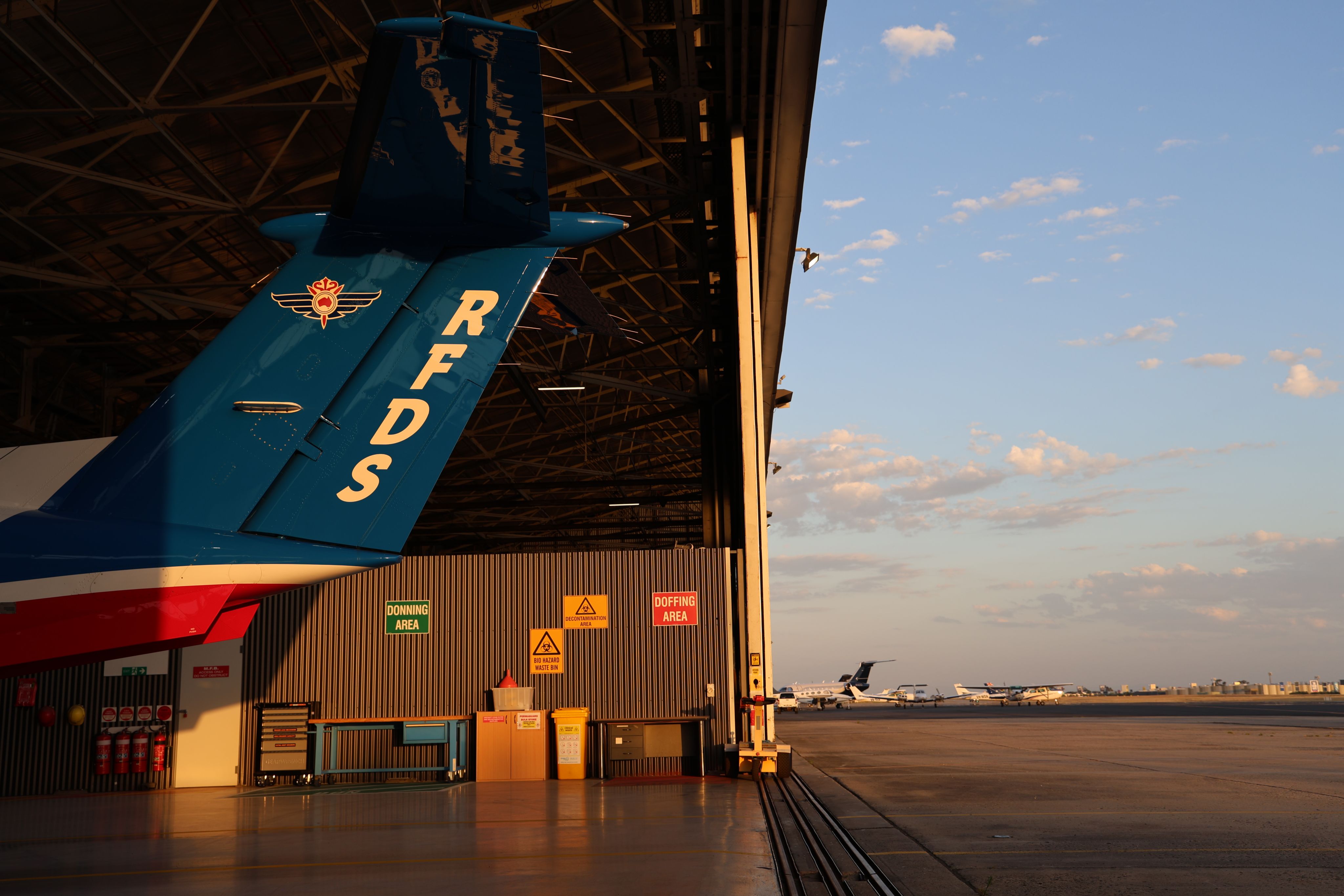
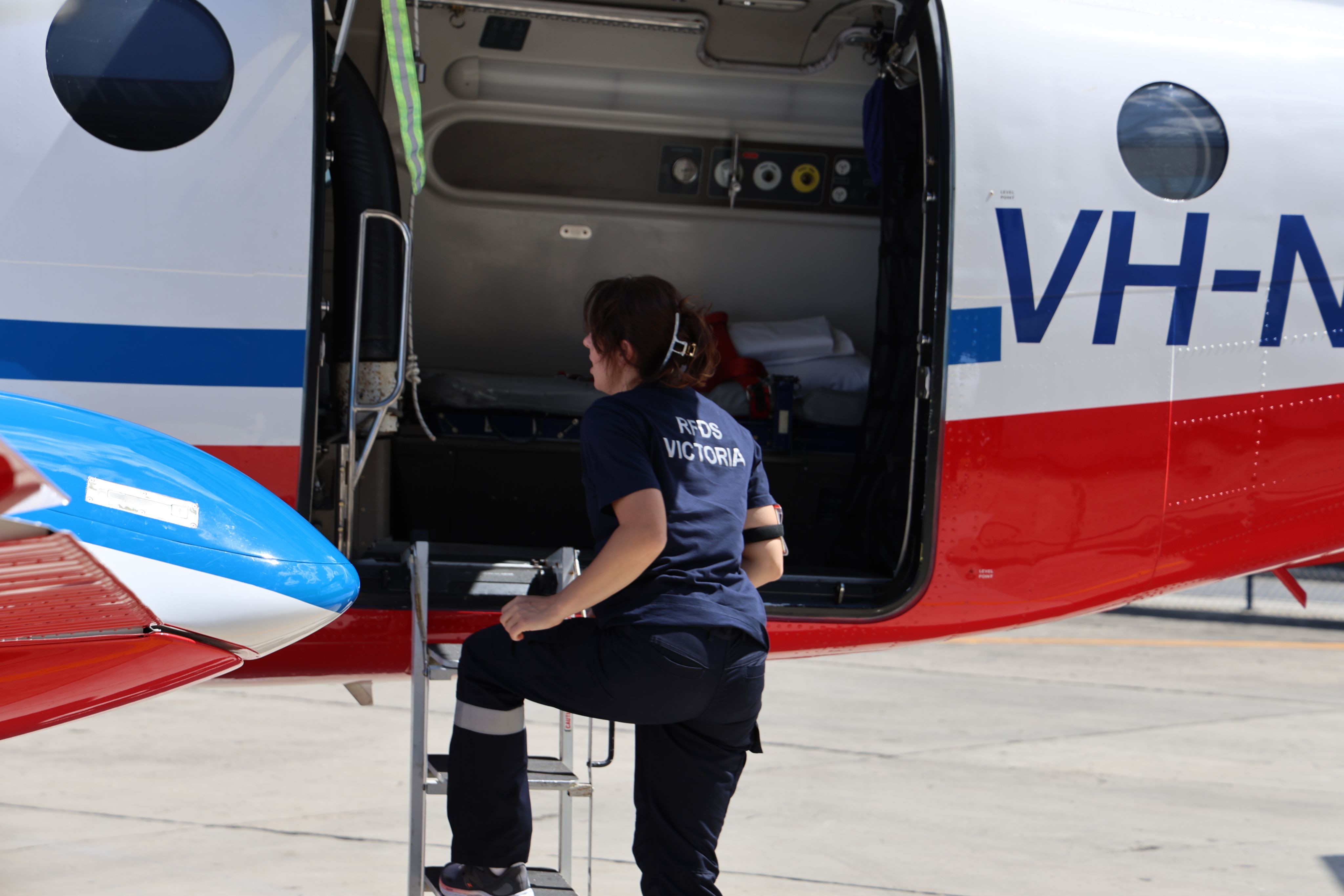
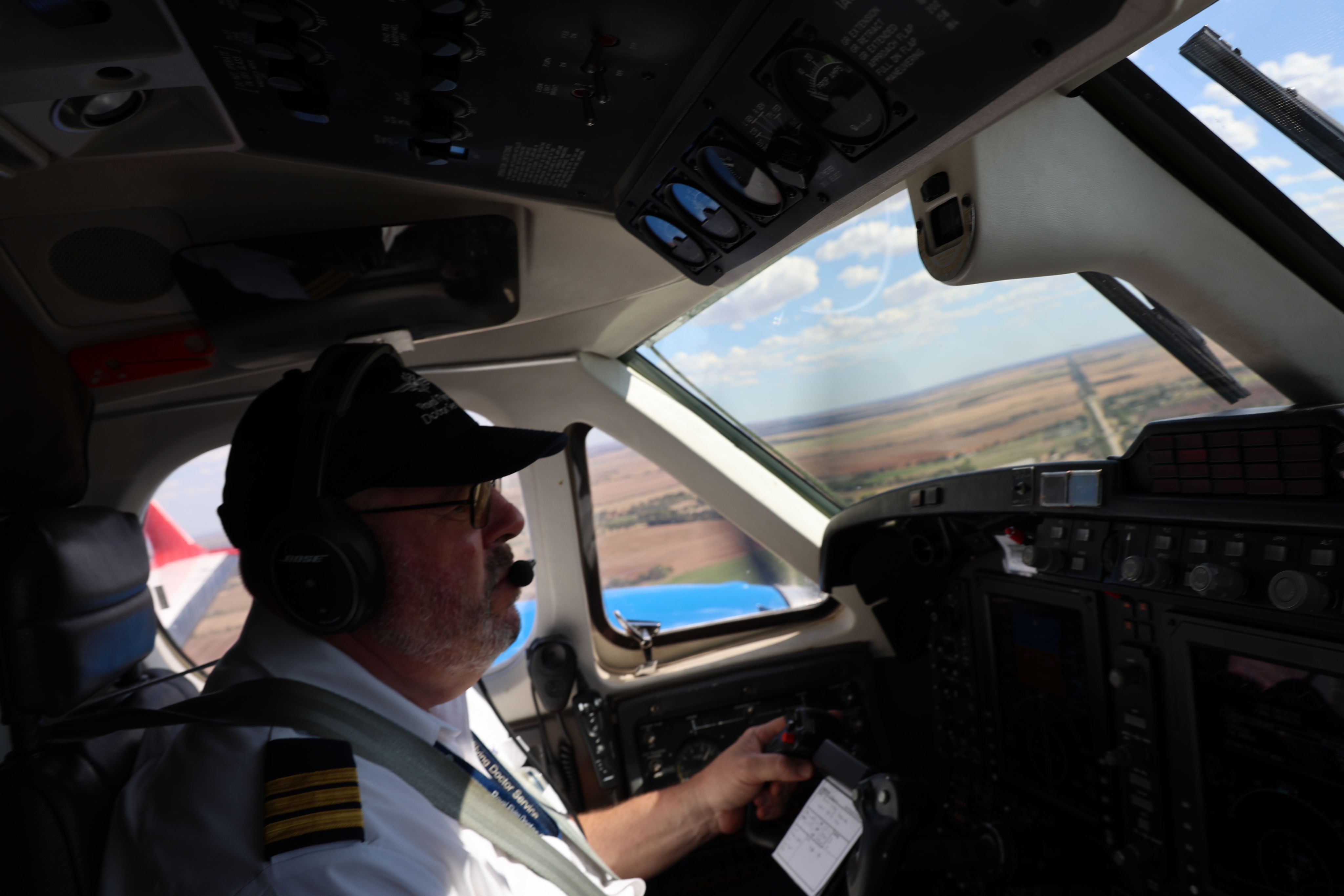
Click here to learn more about the work of our flight crews.

This story was filmed and photographed on the lands and waterways of the Wurundjeri
and Wemba Wemba peoples. RFDS Victoria pays respects to Elders past and present.
